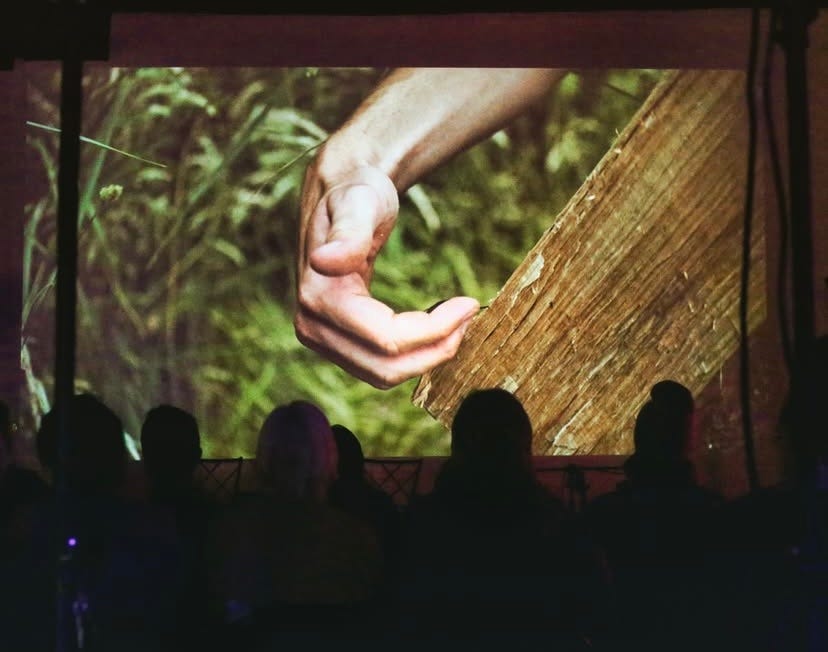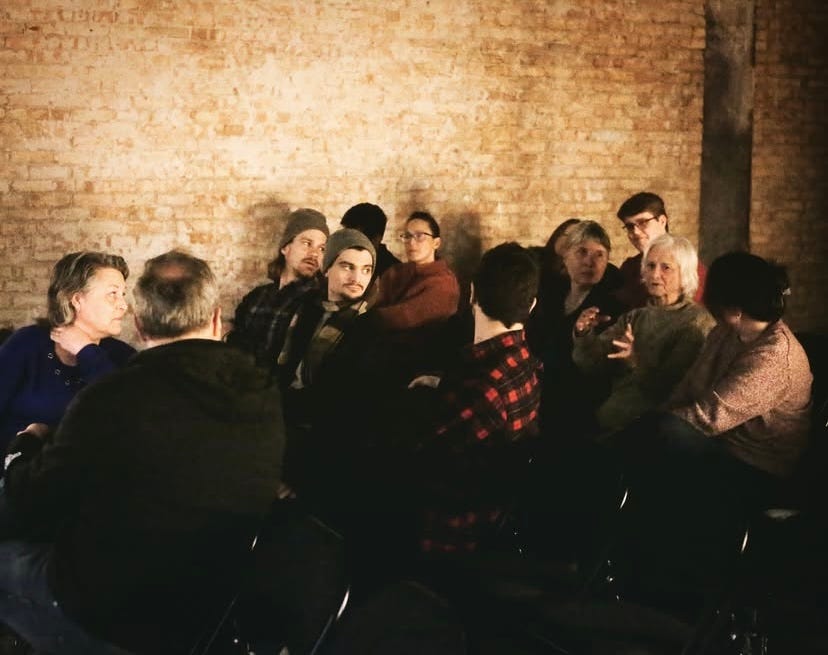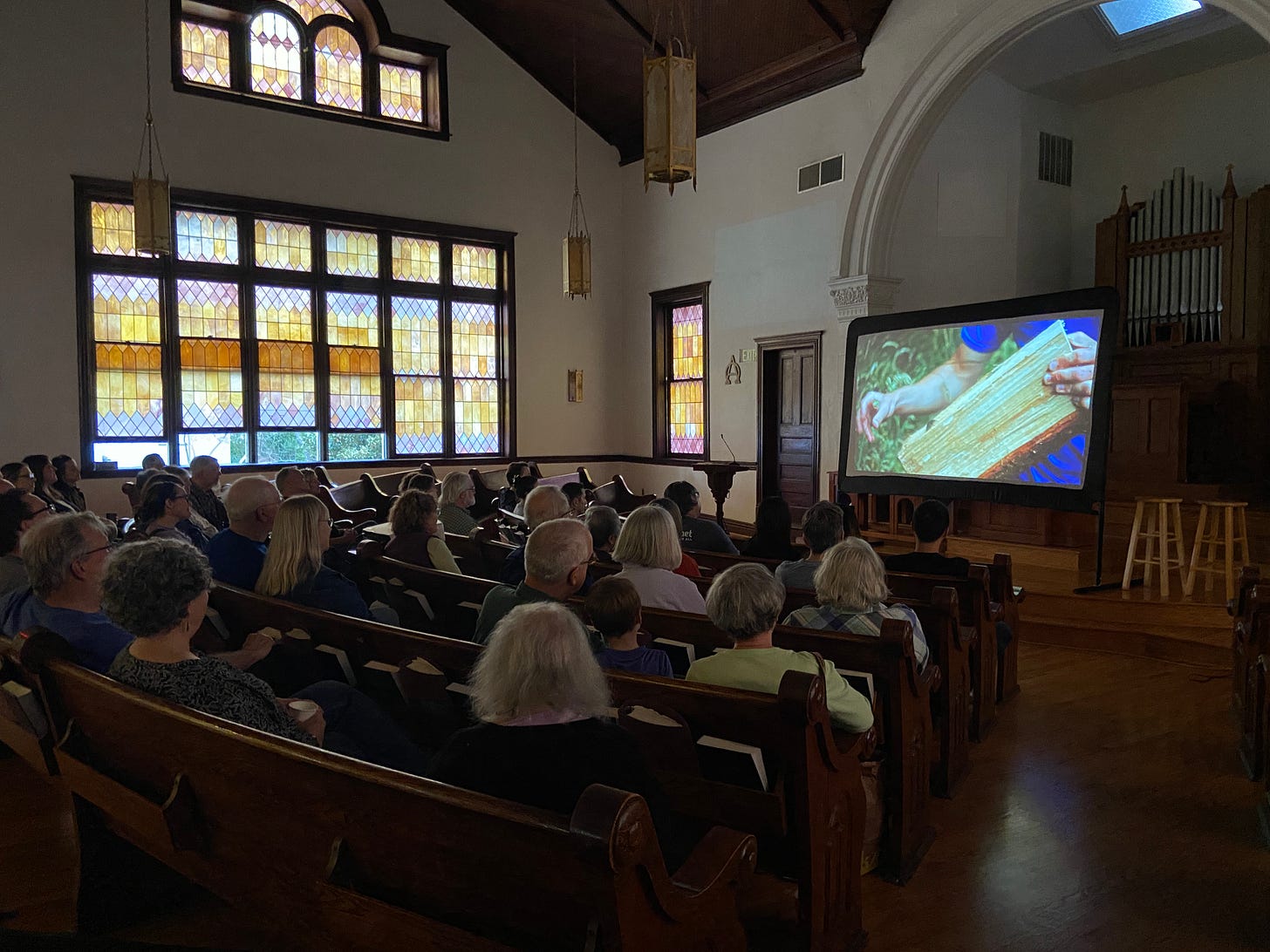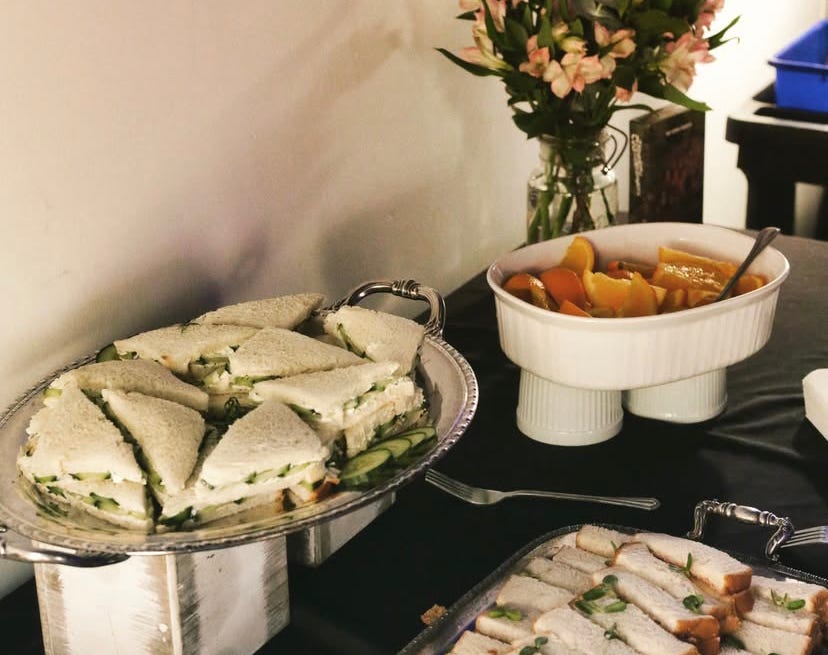Art as Communal Experience: Touring A Kingdom of Tea & Strangers
(and how to watch the film online now!)
Over the past few months, many people have asked me whether I’ve gotten tired of watching my movie over and over again. Since the initial theatrical release in Nashville back in August, we’ve toured the film to over 14 states and hosted over 20 screenings in various theaters, churches, and homes—and at each one, I’ve revisited the whole thing once more.
If you’d asked me to guess over a year ago, I would’ve assumed that I’d be positively exhausted with all the rewatches by now. Strangely, though, that hasn’t been the case at all: instead, I’ve found that the experience feels almost completely new nearly every time I see it with a fresh audience.
This movie, A Kingdom of Tea & Strangers, is a feature documentary following five students during one term at L’Abri Fellowship—a short-term “hospitality community” in the English countryside where they spend a summer exploring their big questions about faith, being human, and finding belonging back home.
And quite importantly to mention at the outset: as of May 10th, the film has finally been been officially released to watch (for free!) on YouTube. But more on that later.
A Kingdom of Tea & Strangers is concerned largely with stirring imagination toward the spiritual value and meaning of community—and happily, these screenings themselves have been their own vessels for community among “tea and strangers” again and again. Frequently during this journey, I’ve been prompted to reflect on the way these communal, relational, and experiential “wild cards” are vital to understanding art in general. Art, I’ve learned, has a malleable 5th dimension that can only be understood and perceived through the presence of other people…and you never know how a given room will enchant the creative object with their unique response.
During this tour, I’ve had so many unique experiences with vastly different groups of wonderful human beings. I’ve watched the film with a collection of longtime Gen Z internet friends (meeting for the first time in-person) in a beautiful brownstone in New York City. I’ve watched it with a collaborative community of YouTubers in Toronto, Canada—a collective of largely agnostic 20-somethings who vaped indoors throughout the whole movie and said when it was finished, “we need to eat more meals together. And also acquire a massive property.” I’ve also watched it with a group of much older folks—many of whom were involved in the early stages of L’Abri—at a Presbyterian church in St Louis. And then there was the screening in Lancaster, PA where we expected 40 people and somehow got 80, with several driving from hours away and staying to talk long past the end of the event.
I’ve discussed the movie with crowds that were almost entirely Christian, and crowds that were almost entirely unexposed to religion. I’ve seen it on big screens and small screens. I’ve watched it with young people and with old people. In each context, it’s been fascinating to observe the subtle differences; some things that get young people to die laughing rarely get a single chuckle from older folks, and often vice versa. Some groups tend to emotionally gravitate toward certain specific characters and really feel their struggle, while others go for completely different ones.
No doubt, there have been common threads; almost every group has firmly latched onto the sequence where one L’Abri worker, Dawn, talks about the importance of prioritizing her role as a mother over her ministry, and the way that ultimately serves the ministry in the end too. Everyone tends to laugh at the moment where a character named Francis carefully tees up to hammer a peg into a wooden stump, only to send it flying out of frame unsuccessfully. And vast swathes of young folks resonate with Ford’s Chestertonian assessment that he is “camping out on the front porch” of Christianity, unsure about stepping inside the house.
People, and their unique responses, personalities, and mindsets, can have a huge impact on art and how it lands. I can’t count the number of times a person has connected the film to their own unique life experience in a way that taught me something about my own art, and revealed new layers I hadn’t perceived in the light of their specific personality. Conversely, when just a few people in a given context succumb to carelessly checking their phone or seem openly disinterested, it changes the whole vibe of the moment for everyone. But when just one person can be heard sniffling through tears, or a few people pipe up with an affirming “mmm” or “wow” at a particular line onscreen, it often causes the whole group to lock in. In this way, we all have the power to be a responsive audience member and enchant the room with our attentiveness.
I used to believe that any movie worth watching would be good however you watched it—whether on an airplane or in an IMAX theater. I guess I’d still say that I believe there are discernible aspects of quality that can be perceived in a variety of contexts, but these days I’m far more convinced that the art we ultimately appreciate and don’t appreciate can be highly contingent on the experience which exists around it, both relationally and tangibly.
Movies, I’ve come to believe, are more than just what’s on the screen—they are also the people you watch them with, the conversations you have afterward, and the atmosphere that is cultivated around the experience. The same could be said of any form of art when it is performed or showcased for others; how we experience art might be just as important as what is being experienced.
That’s not to mention the way that the space itself influences each viewing. In screenings where there have been a lot of people squeezed into a modestly-sized room, I’ve often found that mutual laughter during the funnier moments comes more easily because everyone sits close together and quickly notices others chuckling. When the same amount of people are more spread out in a large sanctuary or theater, the reaction is almost always far more muted.
And then there’s the way that beauty and hospitality impact the perception of the art. Some of our screenings have been held in less-than-comfortable spaces, where the sound echoes cacophonously and the light feels harsh and sterile. Others have been held in rooms that feel truly magical and inviting—or were made inviting on the night.
At some of the showings, the host truly went the extra mile to provide an atmosphere that complimented the values and aesthetics of L’Abri itself: candles on the tables, tea and cookies with an eclectic selection of mismatched mugs beforehand, or even (at one screening in Rhinelander, Wisconsin) a generous member of the community who made platters of cucumber sandwiches and fresh flower arrangements.
It’s hard to overstate the impact that little touches like this add to an artistic experience. We’ve been trained to expect that movies are primarily a form of passive entertainment, and as such, theaters can be trashed for someone else to clean up and the only food befitting of a movie night is something like popcorn and pizza—the same kind of food you’d eat at a baseball game.
Don’t get me wrong, I love popcorn and I’d never want to banish it! But when a host cultivates an atmosphere of beauty and care, even before an artistic experience begins, it endeavors to give the art itself more dignity too. Sometimes, a well-cooked meal or a beautifully-constructed table arrangement can extend the reach and richness of the art object, utilizing the power of hospitality to transform an evening or gathering into its own art as well.
In a world where so many beautiful and powerful labors of love are dumped into the content mill and ground together into indistinct streaming sludge, I've endeavored as best I can to make sure that people have been offered ample opportunity to watch this film in community rather than at home on their phone while multitasking. That’s part of why we released the movie on physical DVD/Blu-Ray—a version with 4 hours of bonus features which even has a “host-a-screening” guide inside, and a peaceful main menu loop meant to set an atmosphere. The same discussion guide is available on our website if you’re interested in hosting a screening yourself, big or small.
Nevertheless, over the last several months, lots of folks asked me when the movie would be available to stream. And despite my value of these in-person events, one of my biggest hopes with this project since the start has always been that it would eventually be quite easy to access and share. Over the last few years, I've been inspired by a wave of "folk filmmakers" like YouTuber Joel Haver who openly make low-budget feature films with the intention of releasing them for free on YouTube. The democratization of filmmaking through the internet is a beautiful thing, and I’ve wanted to be part of the movement of young creators who are demonstrating that great art can come from far outside the studio system. Not just that, but I ultimately desired to make sure this particular film could be shared with a wide and diverse online audience rather than being confined to a platform or streaming service that might only serve a certain crowd.
Recognizing that this is the moment that the movie will be outside of my hands, ending the era where I could curate and host every experience to my own liking, has been a big milestone. It has meant a recognition that some people will watch on their phone, or alone, or in multiple sittings while doing something else. I hope all the resources we’ve cultivated around the movie, and the values presented on and offscreen, will continue to encourage folks to at least watch with friends or family and remember the value of slowing down to offer their communal attention together. At the end of the day, though, I’ve come to accept that this is the moment to finally set the film free.
It’s no coincidence that the public premiering of a work of art is usually called its “release.” I hadn’t understood until recently just how much inner-stability it requires to take your hands off your projects and let them go—but this “releasing” is often crucial in allowing the art to continue to take on new life beyond you, further enchanted by the unique eyes and character of people you’ll never meet.
Stream A Kingdom of Tea & Strangers for free online here.










Thanks for sharing this excellent and touching documentary for free. I've just watched it and feel somehow encouraged and understood, even though I've never been at L'Abri before.
Thanks for lingering in this way.